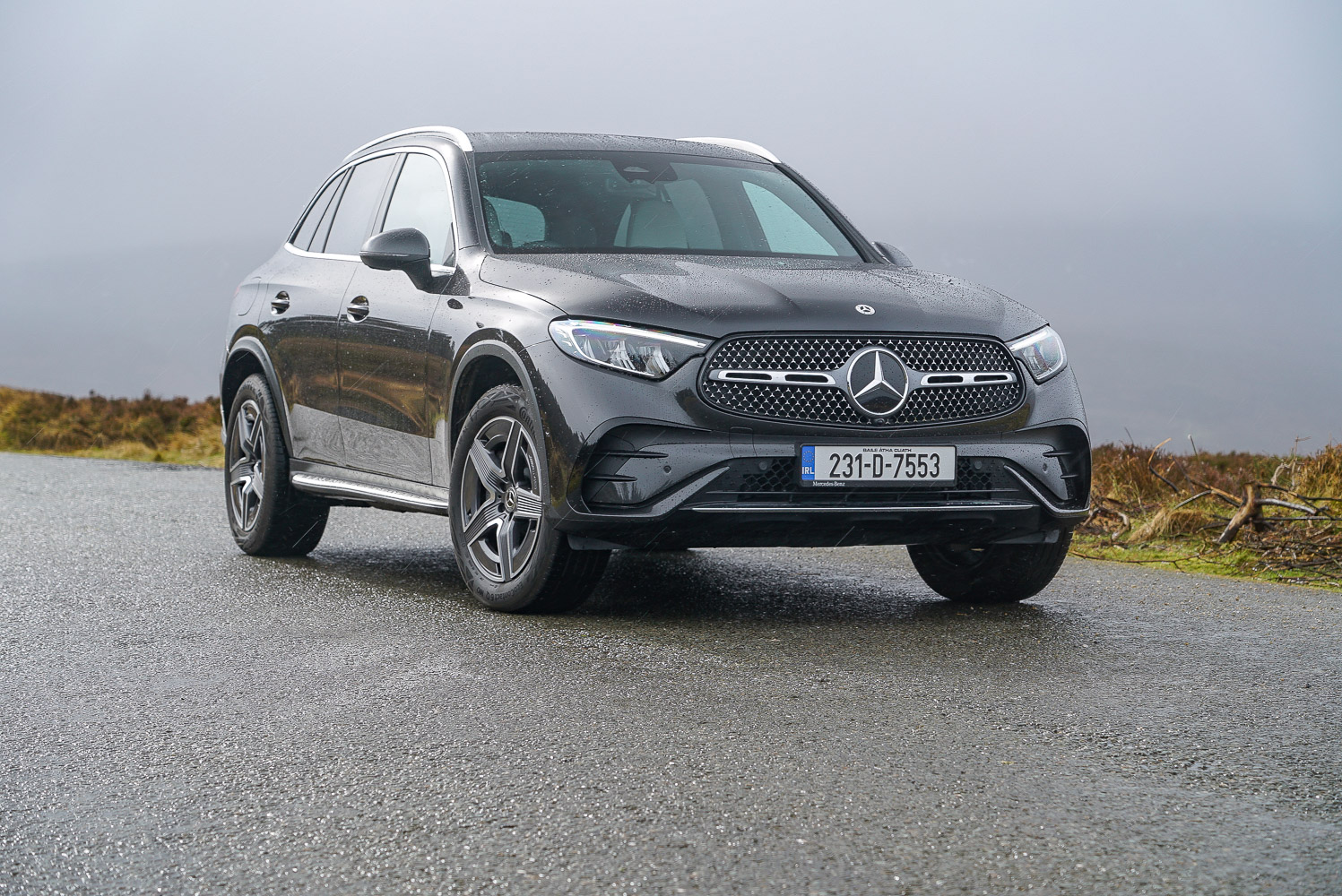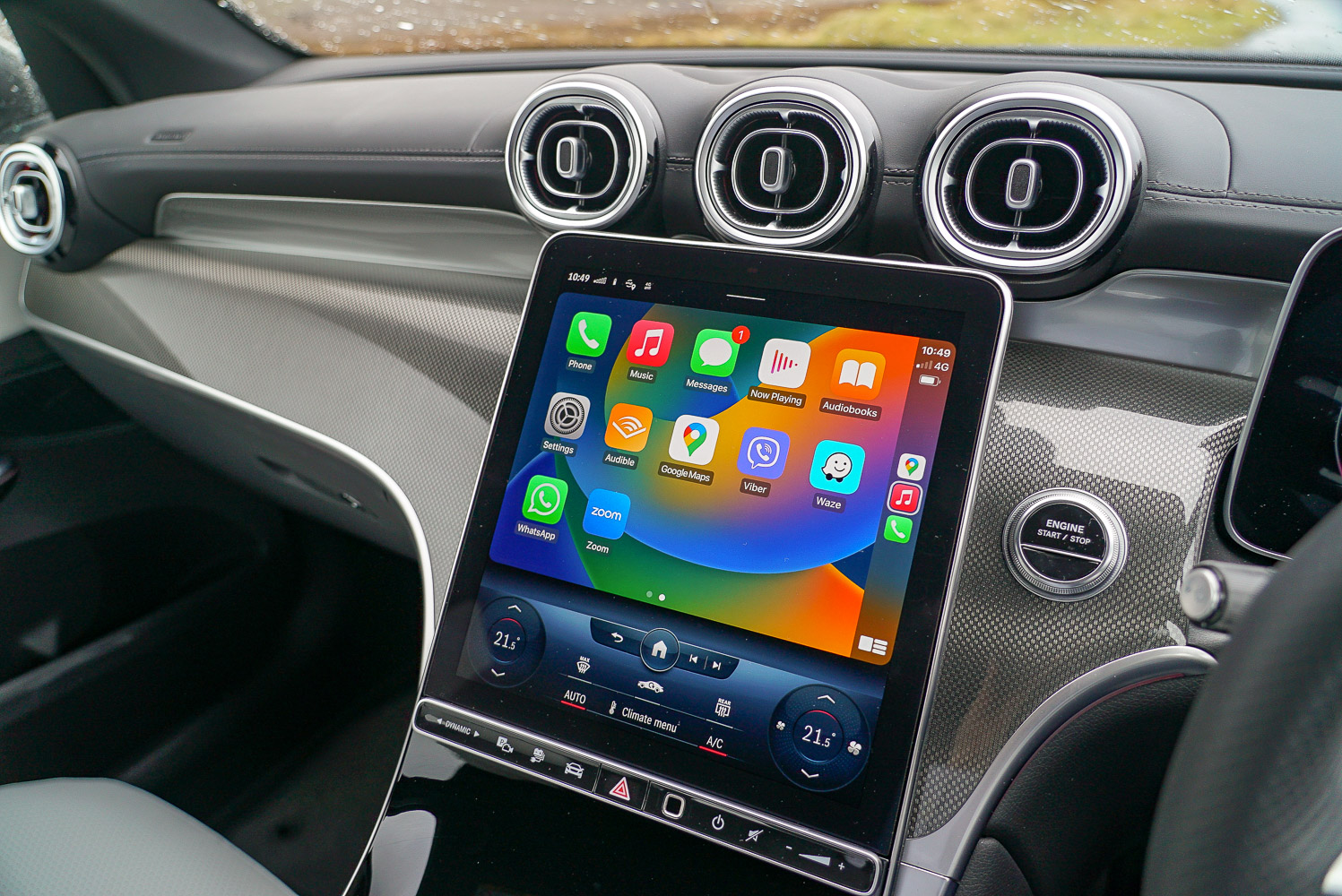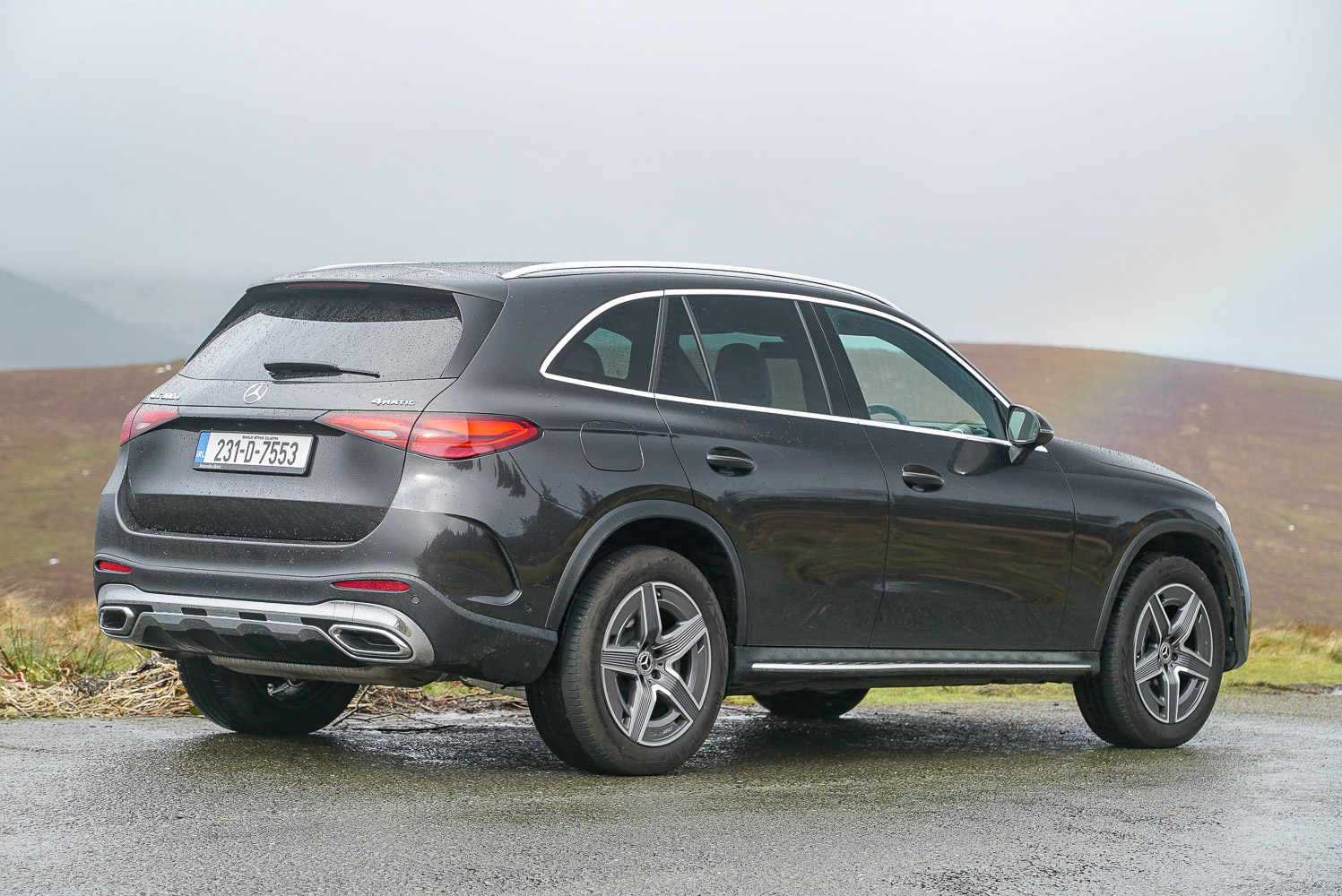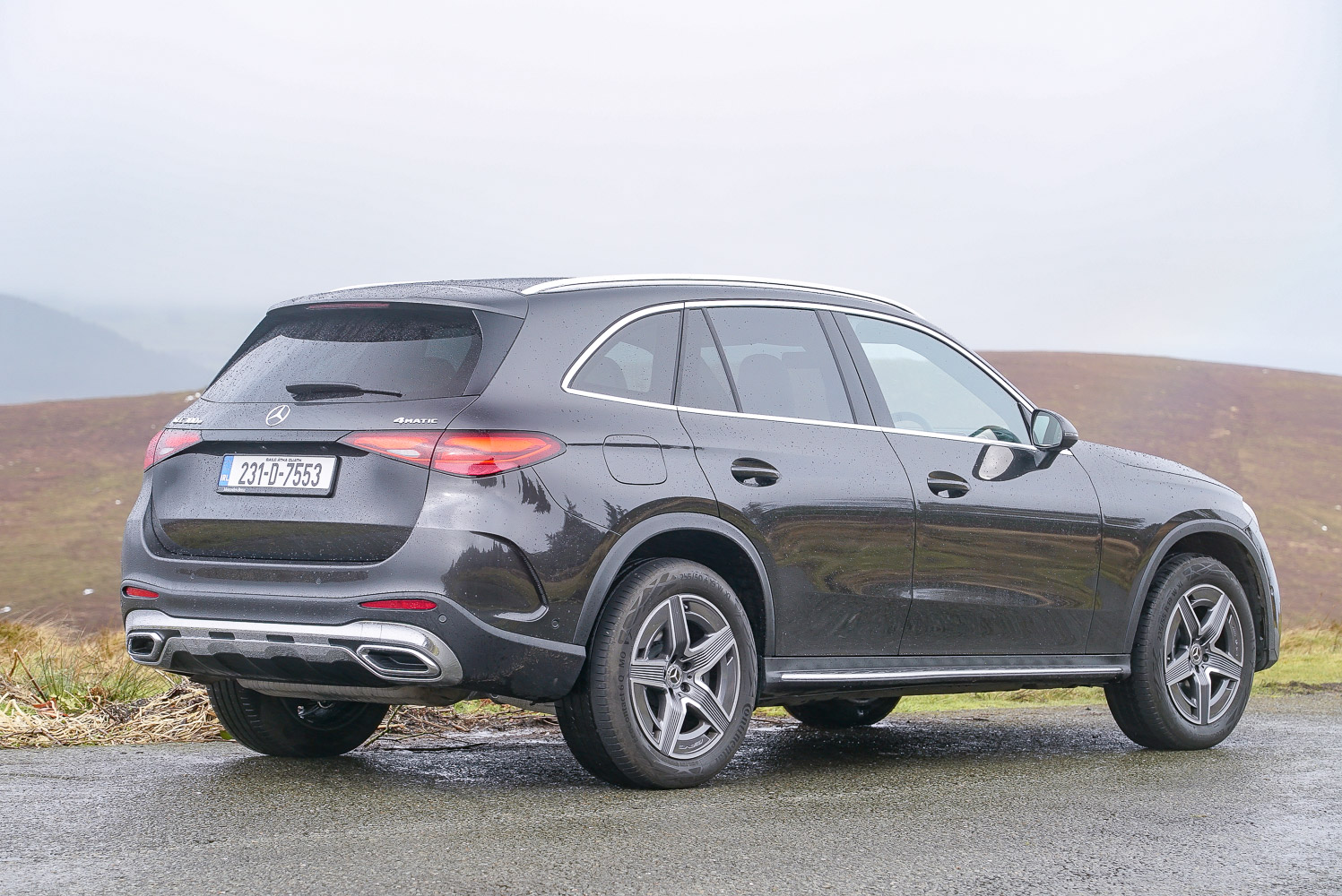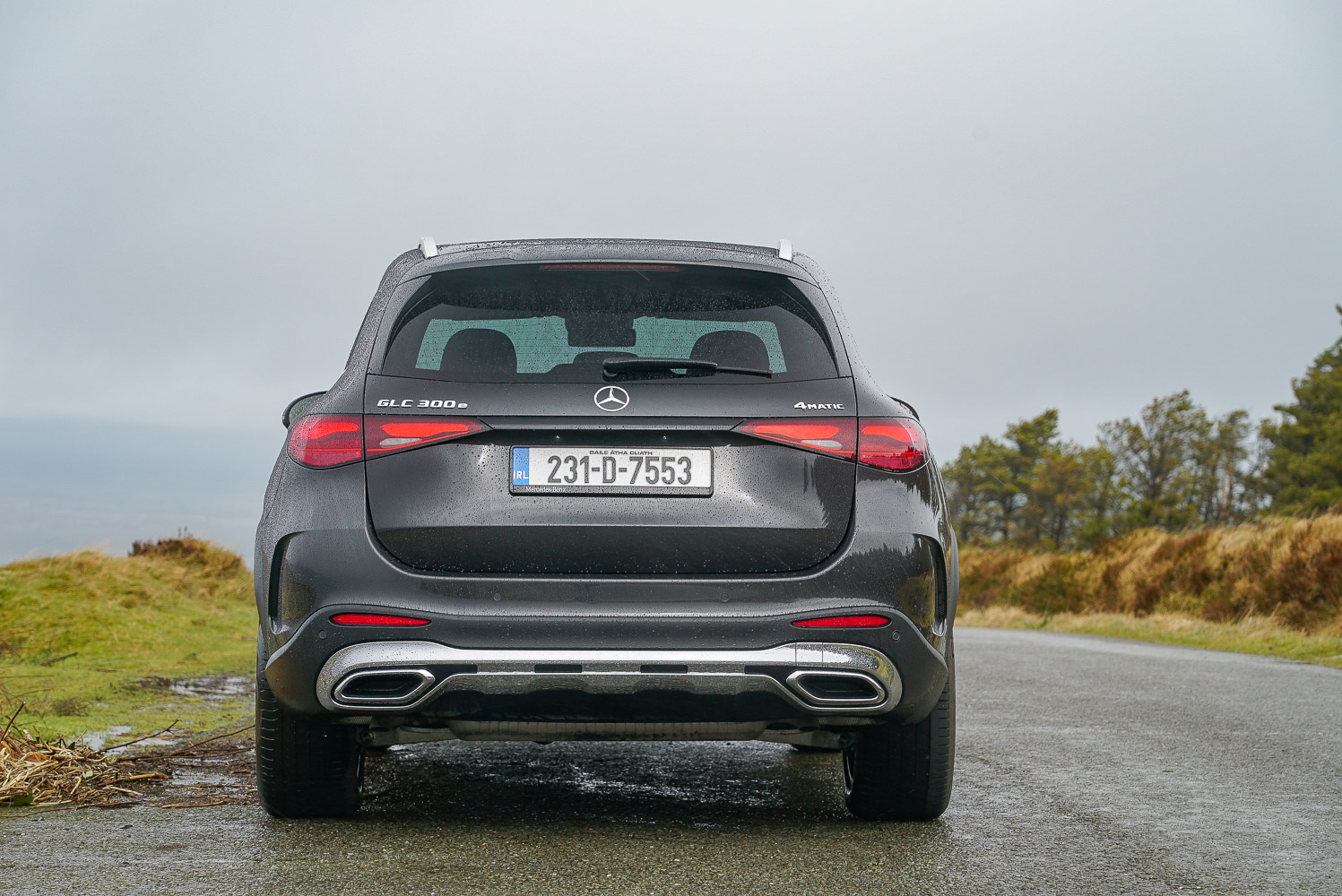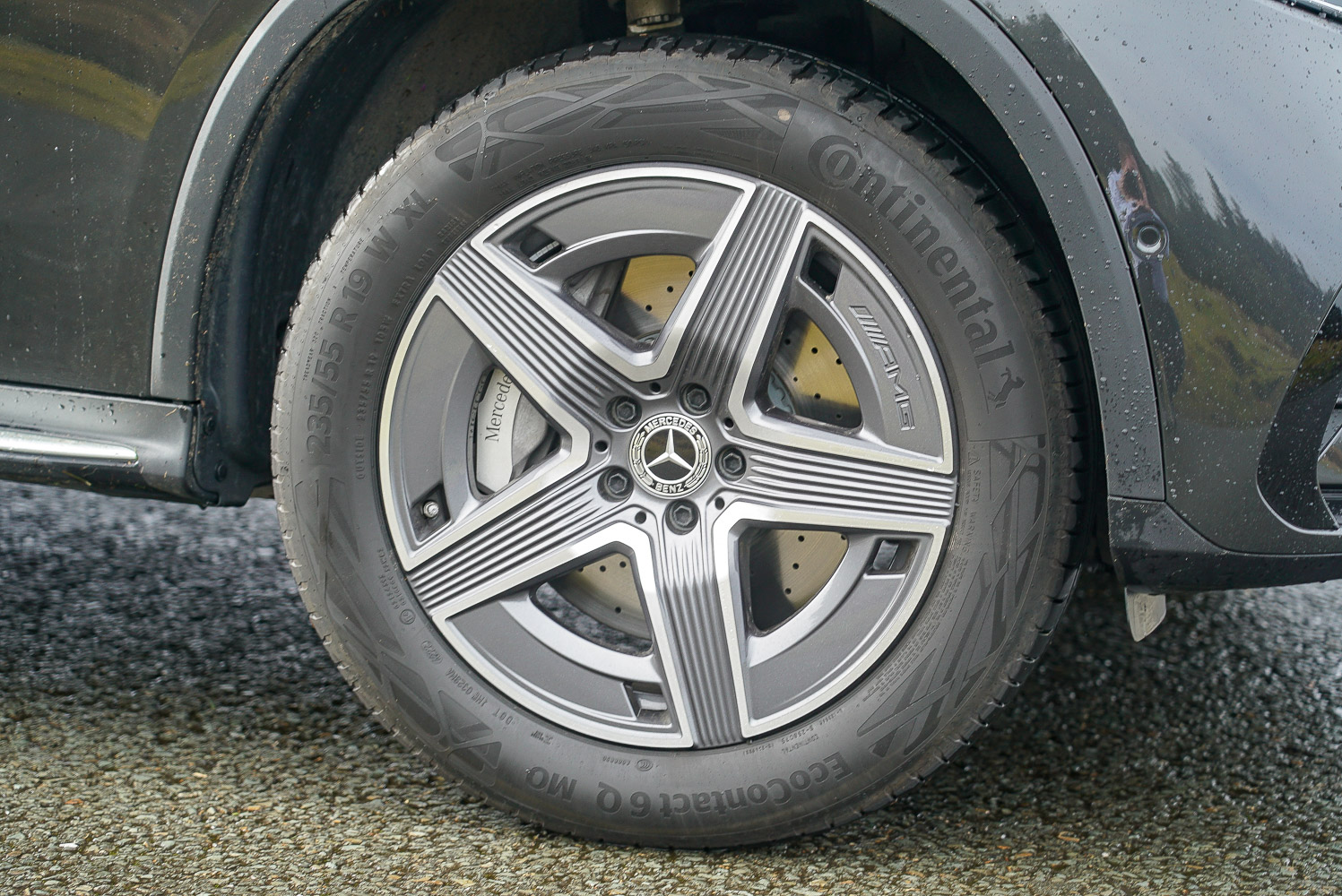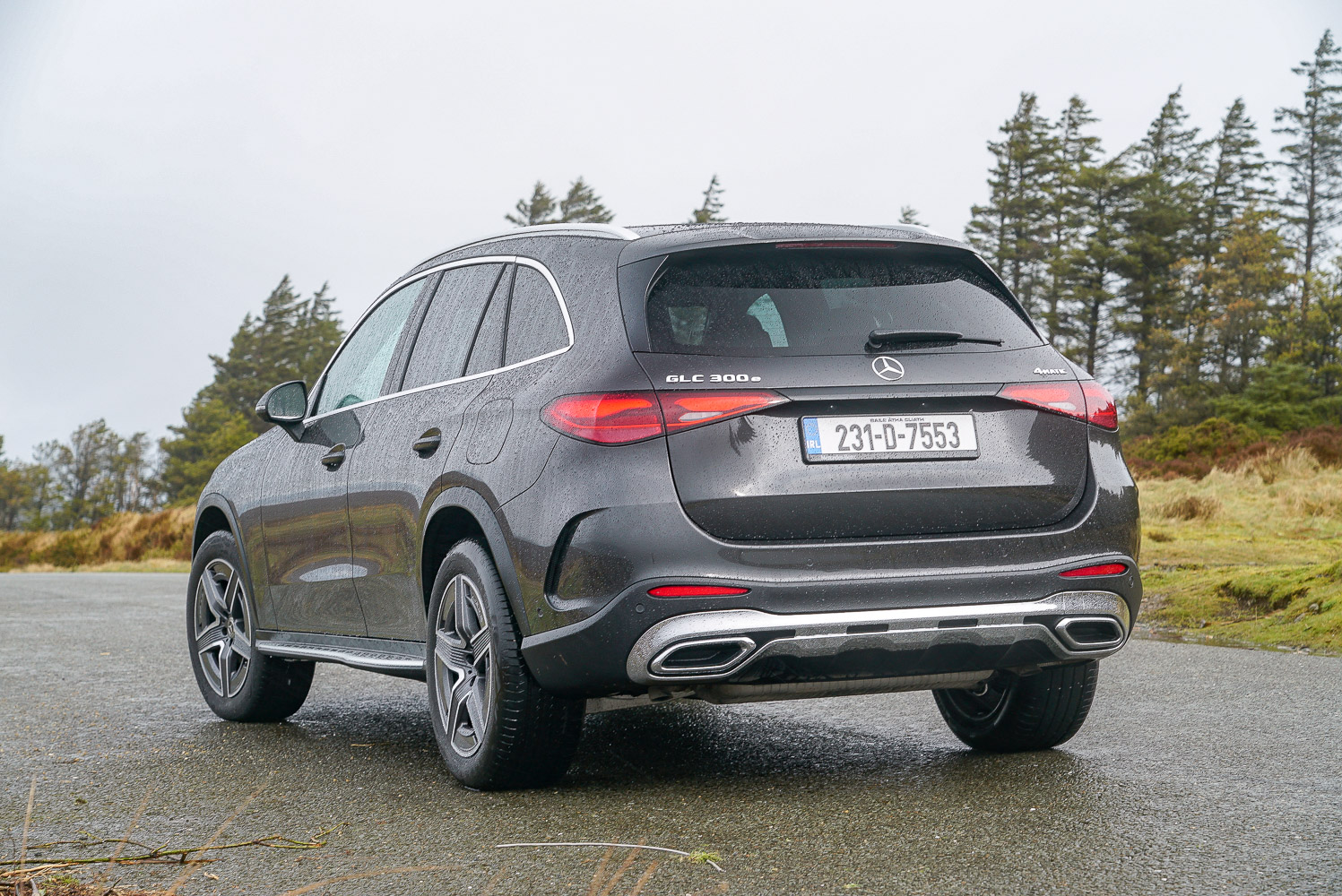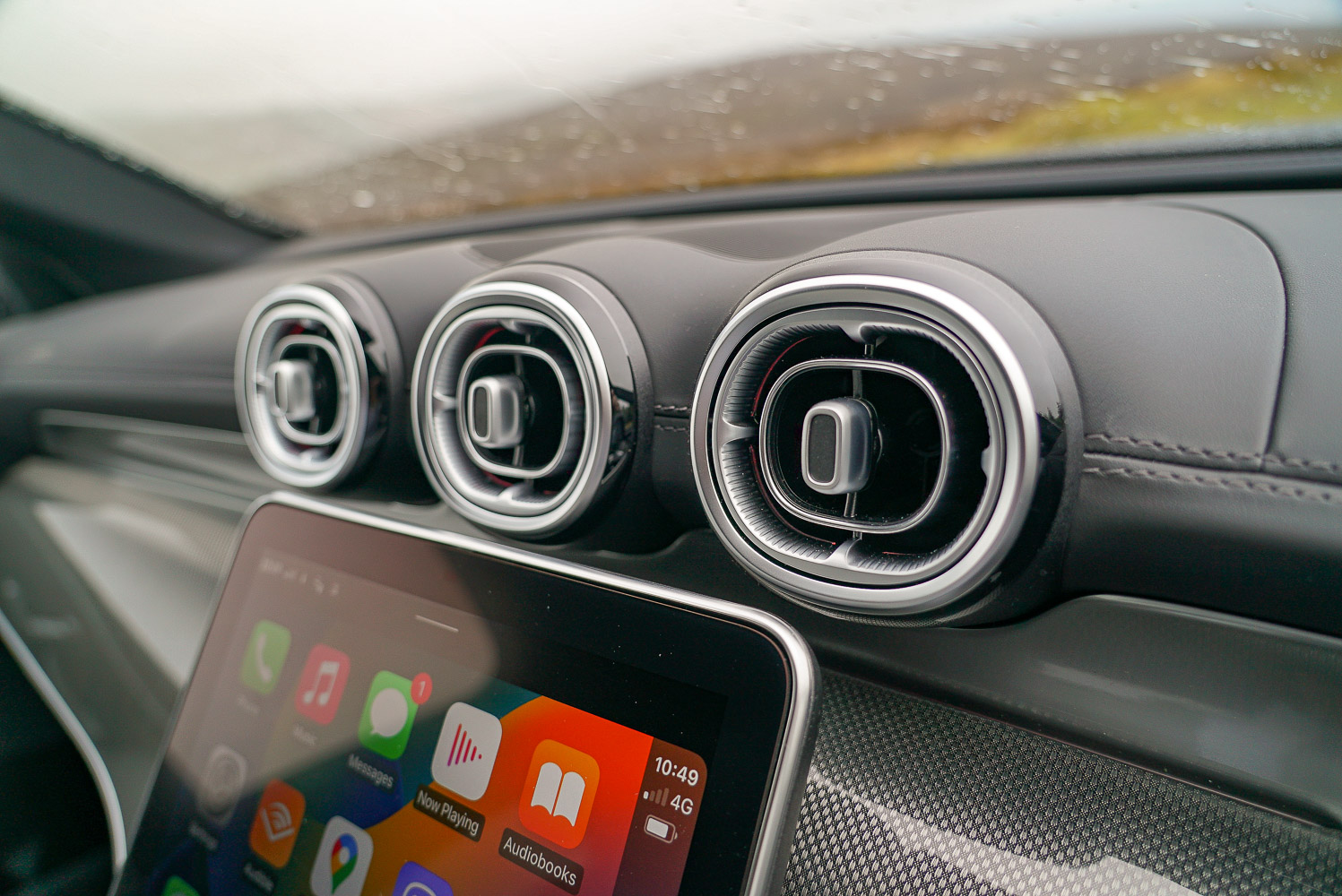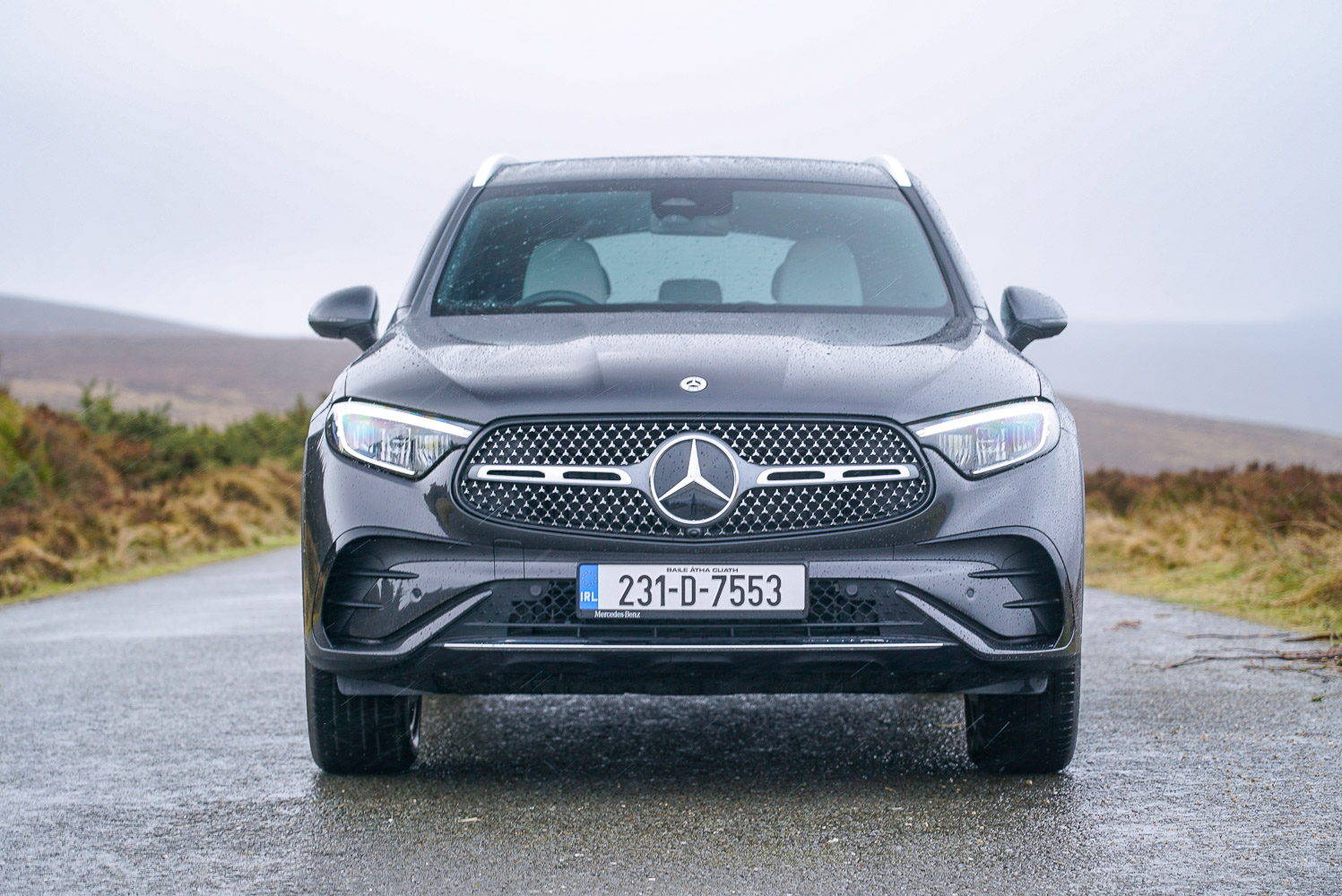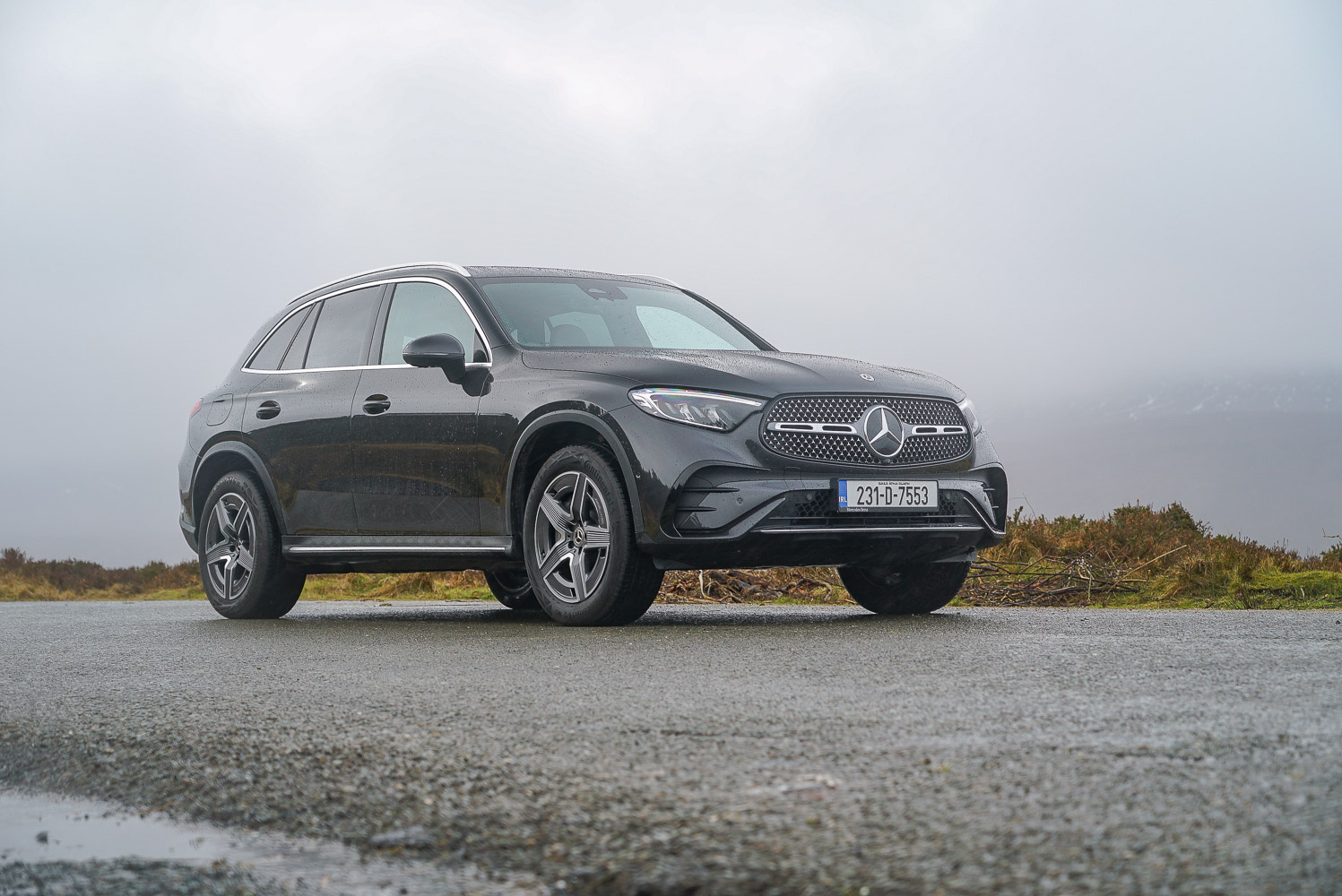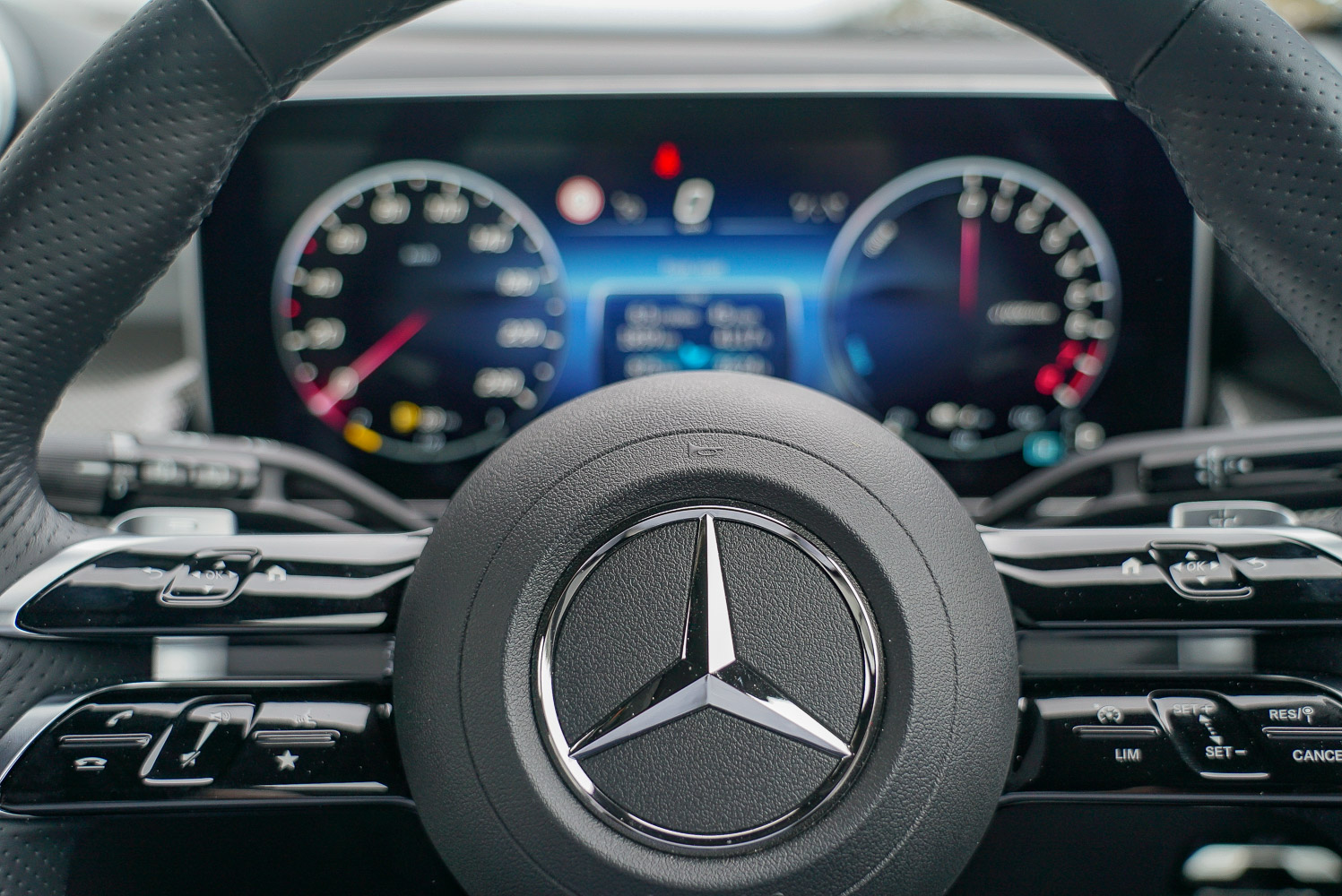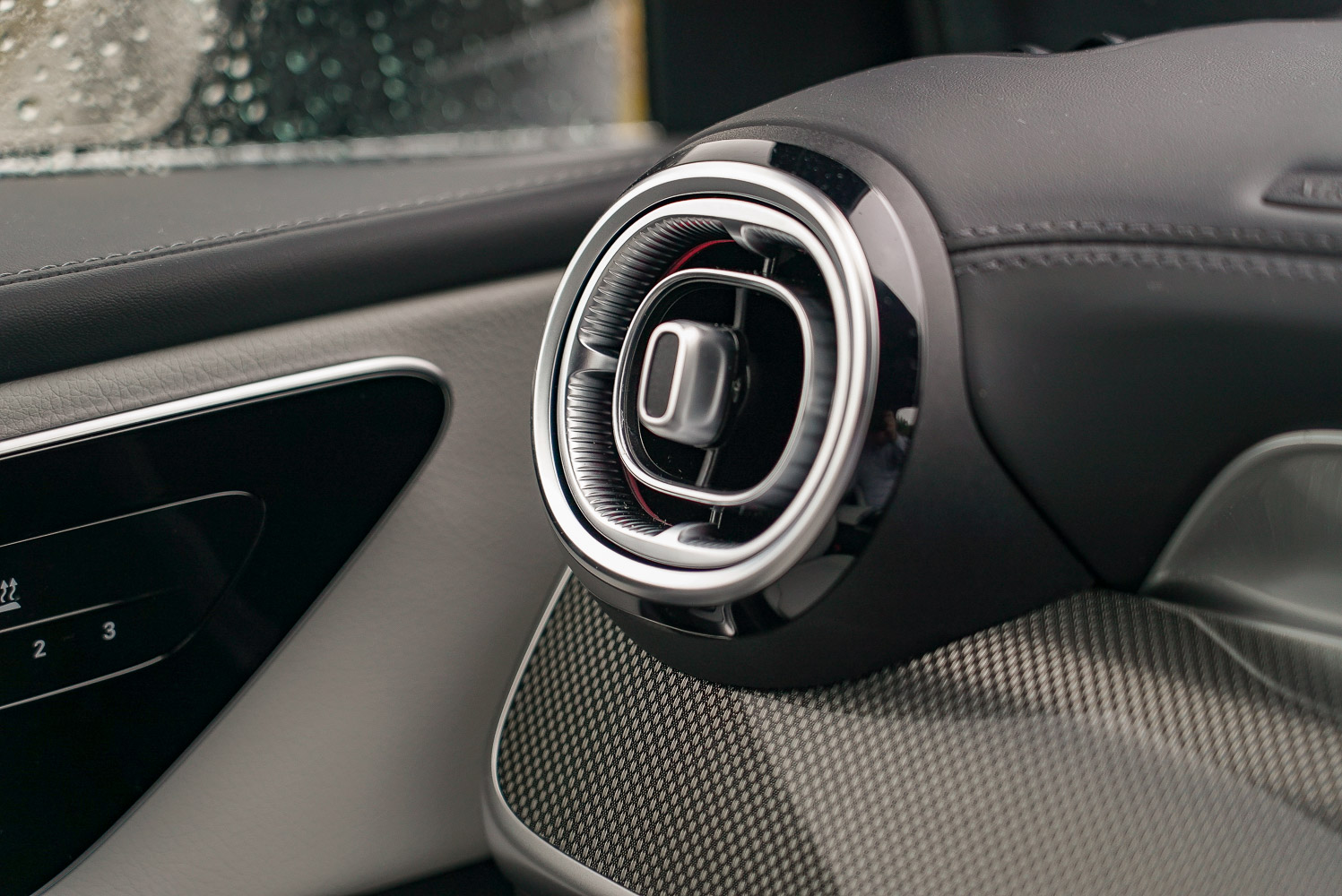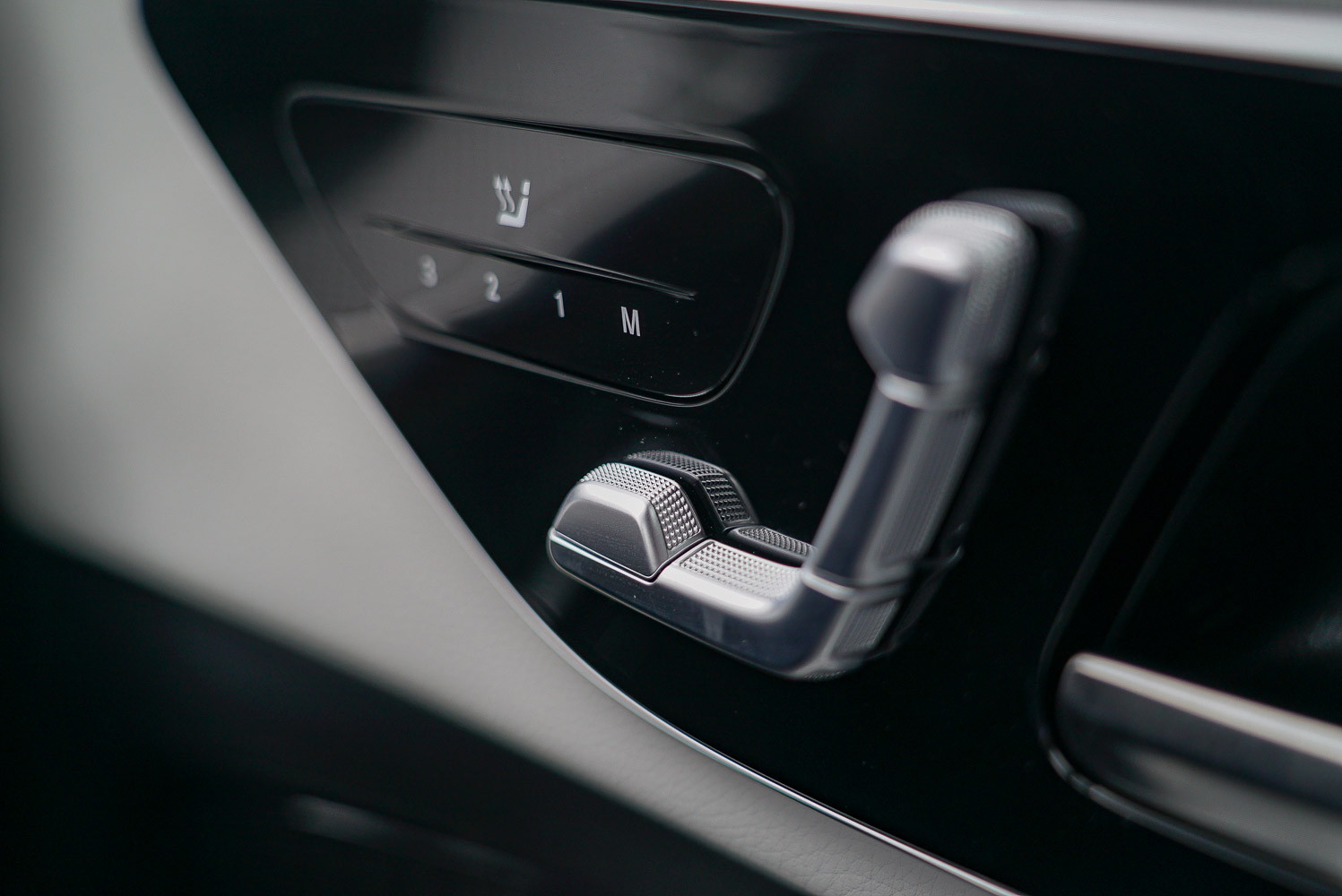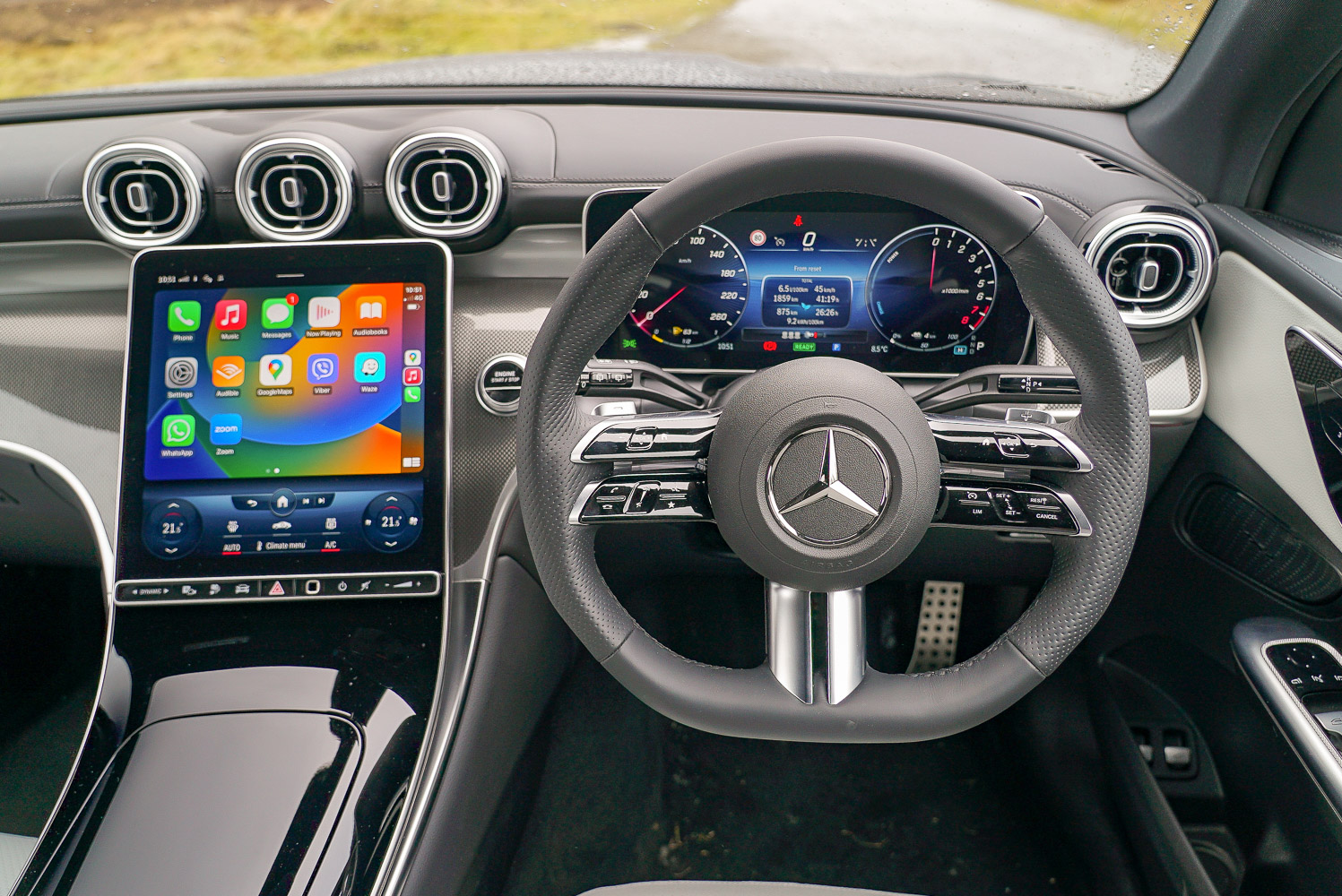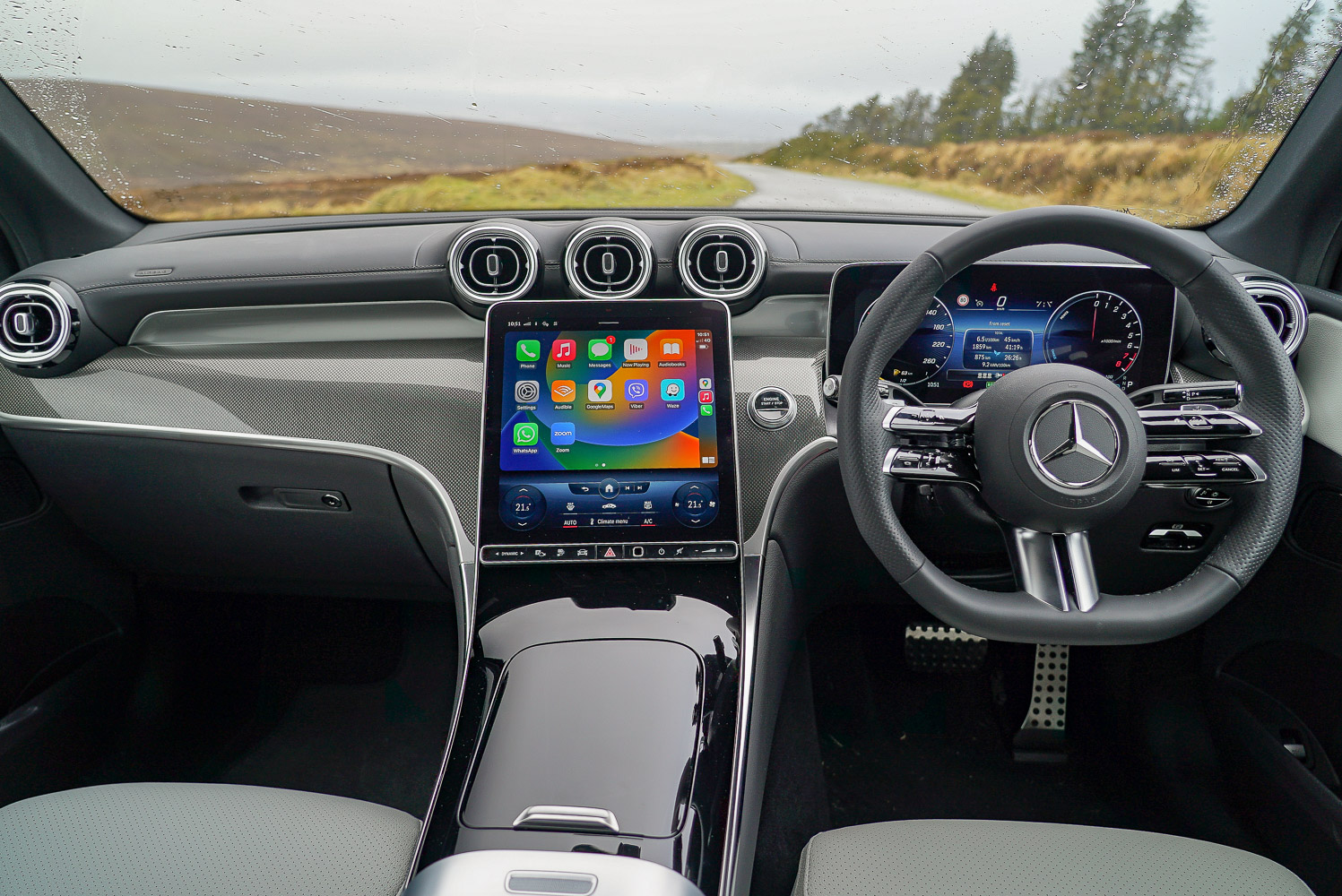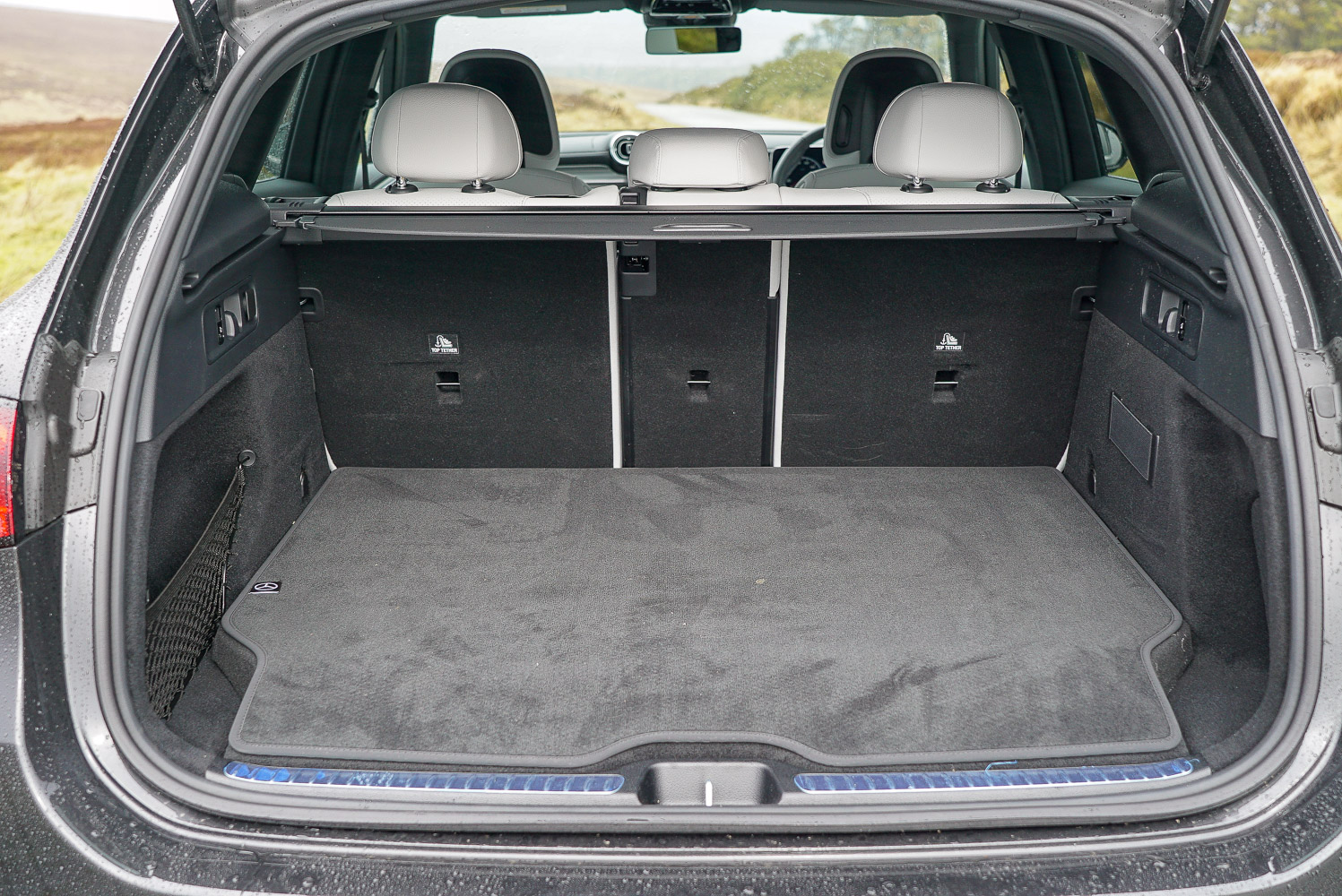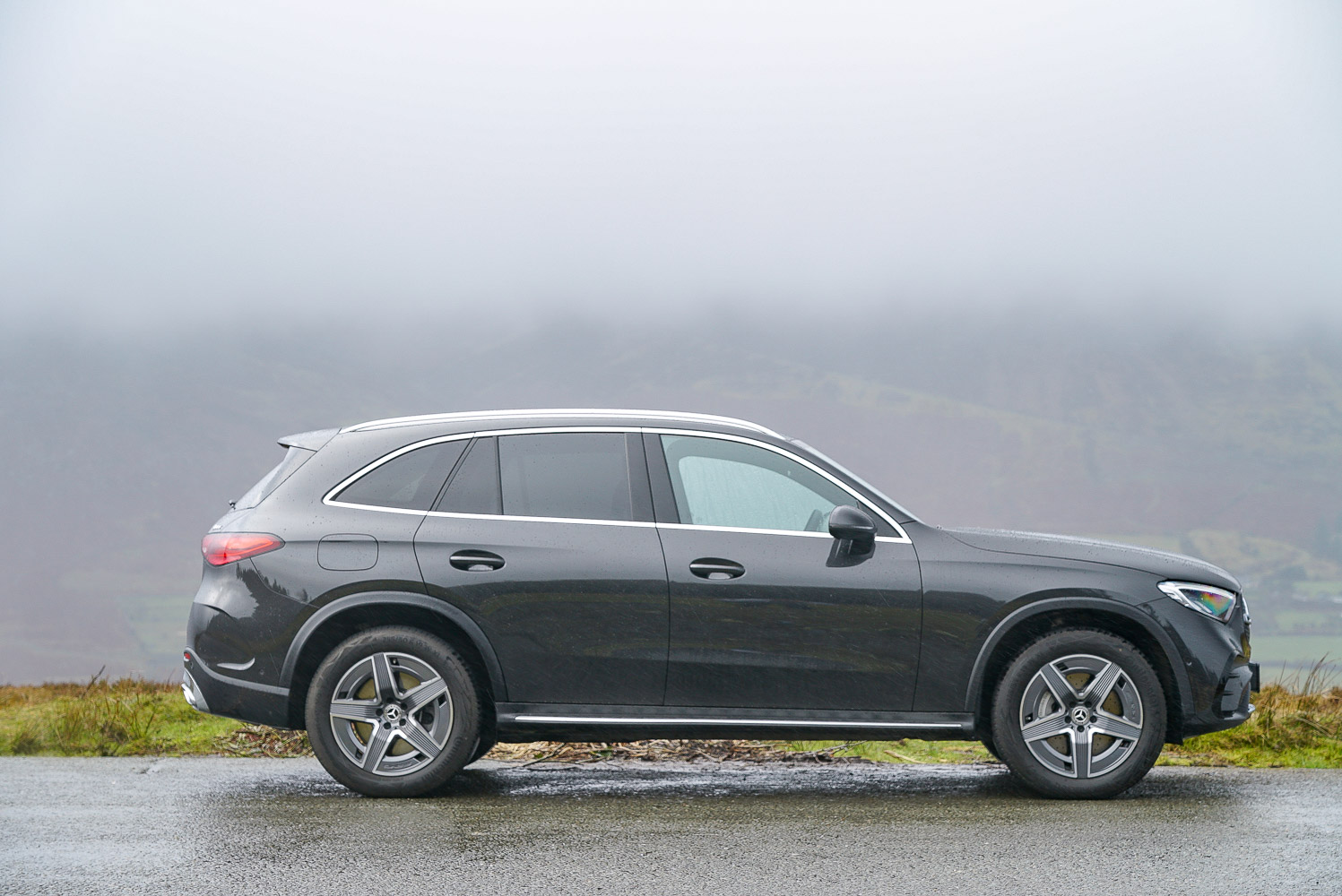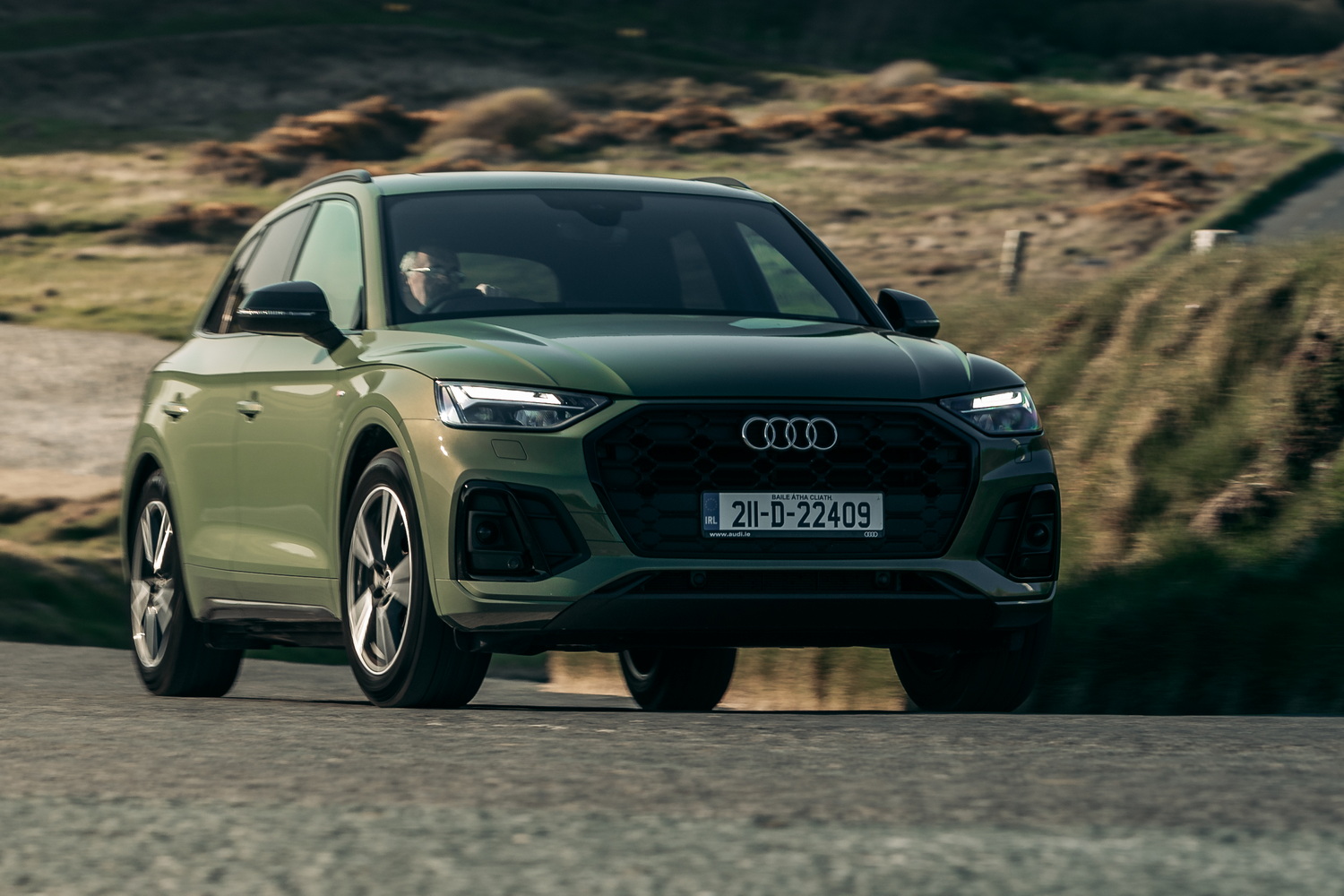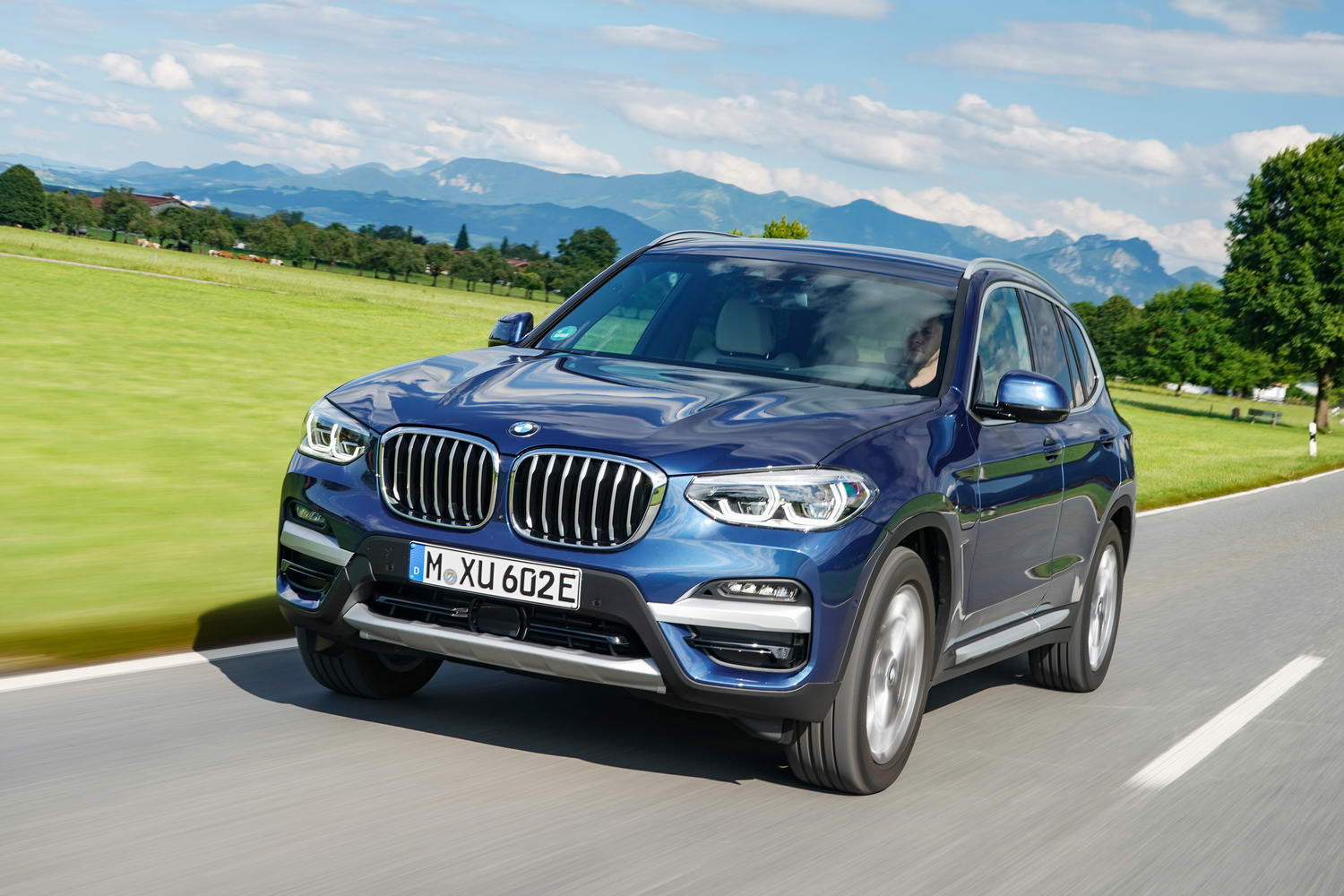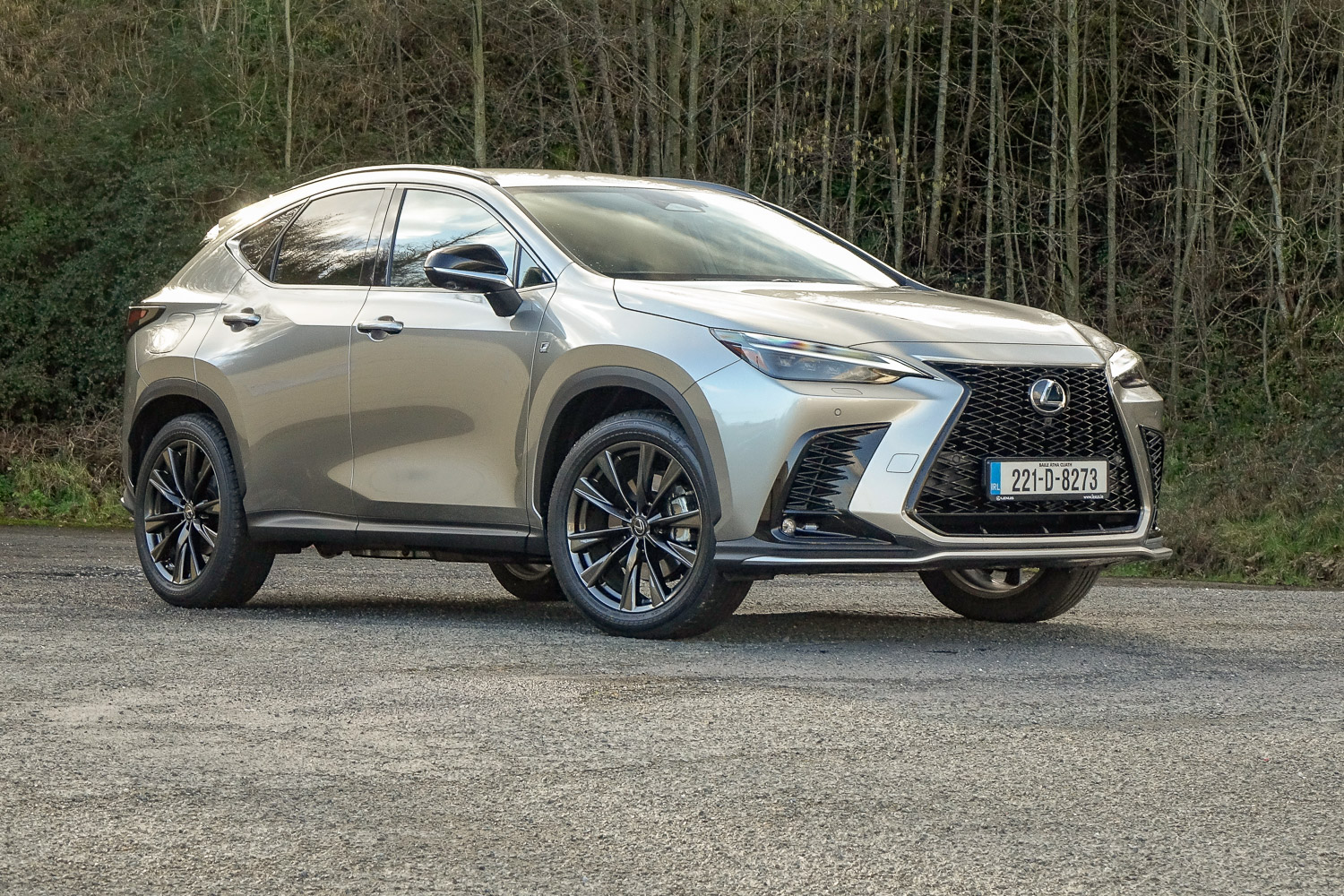Mercedes GLC overview
It's one of the company's best-selling models, but the Mercedes GLC you see here isn't simply a facelift or an update for 2023 - it's a brand-new car. The German firm has seen fit to give the second-generation GLC an evolutionary design, and the casual observer is likely to only spot the differences between this model and the outgoing one if they are parked side by side. Either way, the GLC is a handsome looking car and, as before, it's available as a five-door, five-seat SUV or a slightly less practical (but more expensive) GLC Coupe.
There's an evolution for the exterior, and it's a similar story for the running gear. All petrol and diesel versions now come with 48-volt mild-hybrid assistance, while the plug-in hybrid petrol and diesel models feature a larger drive battery, so they can travel further before the engine fires up to provide assistance.
The other major change is an upgrade of the cabin, with S-Class-inspired plush materials, high-resolution displays, increased connectivity and, for some versions, augmented reality navigation directions.
All this is needed to keep the GLC competitive in a class that's bursting with talented rivals. The main opposition comes from the BMW X3 (and coupe-styled X4), while the Audi Q5 (including Sportback) is a close rival, too. Beyond the main German contenders, there's the latest Lexus NX, which has taken a significant leap over its predecessor, while the Jaguar F-Pace and Range Rover Velar share running gear and tech. As with the GLC, all of these models are available with plug-in power. Another option is the Volvo XC60, which also features a plug-in model that gained a larger battery in 2022. One model that's not available as a PHEV is the Porsche Macan, although what it does offer is by far the best handling in the class.
There are all-electric options, too. The Tesla Model Y leads the way in the class for charging and range, while the BMW iX3 is the zero-emissions version of the X3. There's also Mercedes's own EQC.
The Mercedes GLC model range
Irish prices for the new Mercedes GLC start from €80,310, which gets you behind the wheel of the GLC 220 d. All versions of the GLC come with 4Matic four-wheel drive and a nine-speed automatic gearbox and at launch all versions of the GLC come with a four-cylinder turbocharged engine of some description.
That 220 d features a 194hp unit with 440Nm of torque, while moving up to the GLC 300 d for around €12,000 extra sees these figures rise to 266hp and 550Nm. Both of these models come with a 48-volt mild-hybrid system that adds 14hp of electrical assistance. This system is also fitted to the €94,945 GLC 300 petrol, which has 254hp and 400Nm of torque.
The plug-in hybrid models share the same electrical running gear, which comprises a 134hp electric motor with 400Nm of torque, plus a 31.2kWh battery located under the boot floor. This battery is substantially bigger than the 13.5kWh pack that featured in the previous generation plug-in models, so there's a significant increase in all-electric range.
In the diesel-powered GLC 300 de (€93,250), there's a driving range of 126km, while the engine matches the 220 d with a 194hp output. For the petrol-powered GLC 300 e tested here (€91,510), there's a 201hp output for the engine (although the combined output is rated at a healthy 313hp) and an all-electric range of 129km, largely courtesy of the petrol car's 60kg lower weight.
As it stands, there's just one trim level available on the GLC, so you get the same equipment irrespective of which powertrain you choose. It's labelled AMG Line Plus, so not only do you get a look inspired by Mercedes's performance division, but you also benefit from plenty of standard kit. There are 19-inch alloy wheels and adaptive LED headlights flanking what Mercedes calls its 'diamond radiator grille'.
Inside, there are heated front seats with electric adjustment and memory function, Artico synthetic leather trim throughout, two-zone climate control, widely adjustable ambient lighting and a multifunction steering wheel wrapped in Nappa leather.
The dashboard features two displays. There's a 12.3-inch screen ahead of the driver for the instruments, while the central touchscreen measures 11.9 inches and comes with Mercedes's latest MBUX multimedia system. This has the usual smartphone connectivity, navigation, DAB radio and voice control, and it also features a fingerprint scanner to load specific driver settings.
There are packs available that upgrade the spec even further. For €3,380 extra, the Premium Package adds more advanced adaptive LED headlights, acoustic glass that insulates from heat and noise, keyless entry and starting, plus a 360-degree camera system that includes a Transparent Bonnet system that allows you to scan for objects that would normally be out of sight in front of the car. There are also 3D augmented reality directions, which use the front-facing camera to project navigation directions on the screen.
The Premium Plus package costs €7,551, and as well as all of the Premium kit, it adds a Burmester surround sound system, even more advanced headlights that can illuminate pedestrians or display warnings about lane widths or driving the wrong way on roads. Four-zone climate control, a panoramic sunroof and a head-up display are all added, too.
The Night Package costs €891 and adds gloss black exterior trim, while the Driving Assistance Package Plus is €4,807 and adds active safety systems that offer assistance with lane changes, as well as helping to maintain a distance to the vehicle in front, adjusting your speed with the limit detected, evasive steering and optimising the car's safety systems in the event that an accident is about to occur, whether the danger is coming from the front, rear or either side.
The Mercedes GLC interior
From the outside, the new Mercedes GLC is quite understated, almost to the point of anonymity in a car park full of SUVs. However, it still looks pretty handsome on the whole, and when you climb aboard, the cabin is sure to draw your attention. It's beautifully built, while the dashboard is lifted straight out of the C-Class, so it features fantastically tactile air vents that are more solid than those found in the S-Class limo. The slanted touchscreen looks great visually, and it's seamlessly integrated within the piano black centre console. It works pretty well, too.
We'll be the first to admit that we didn't like this generation of Mercedes steering wheels when they first came out; we felt that the touch-sensitive controls would be too difficult to use when on the move. However, as with many similar systems, they get better the more you get used to them, and the set-up works quite well most of the time, with the right-hand buttons controlling the driver's display, the left-hand ones operating the central screen. There are decent digital instruments with a wide range of customisation, and it's possible to show as much or as little information as you want.
As well as some fantastic tech, the cabin offers lots of comfort. The front seats have a wide range of adjustment, and the electrically adjustable steering wheel is a bonus, too - it's very easy to get comfortable at the wheel, and you can save your settings with the memory function.
In the back, the bench seat is wide enough for three, but there's a distinct transmission tunnel for the middle-seat passenger to straddle with their feet - passengers in the outer chairs get more room, while there are air vents in the back that match those up front in terms of quality. Both outer rear seats feature the usual ISOFIX child seat attachments.
One area where the GLC 300 e loses out is for boot space. The size of the drive battery on board means some compromises have had to be made, with a high floor being the first thing to contend with when the powered tailgate is opened. A 400-litre capacity in five-seat mode is a whole 200 litres down on the mild-hybrid versions of the GLC. A 1,497-litre capacity with the back seats folded is 143 litres behind the standard GLC. Still, for many, the plug-in model's longer all-electric range will be worth the sacrifice.
The Mercedes GLC 300 e driving experience
It's easy to get comfortable at the wheel of the GLC 300 e, and that's the overriding impression you get from the driving experience, too. With such a large battery on board, if you do lots of short, low-speed trips within the official 129km maximum range, and are able to recharge the battery religiously, then there's every chance that you won't trouble the petrol engine for weeks, maybe even months.
When it does fire up, the four-cylinder unit is quite smooth and not very loud, further contributing to the GLC's refinement. The car is quiet around town, while faster driving on motorways is equally refined when cruising at the speed limit.
As well as having a widely-configurable dashboard and interior, the GLC 300 e also features a number of driving modes. There's an all-electric setting that forces all-electric driving if there's enough charge in the drive battery, while the hybrid mode manages energy flow between the propulsion systems and the road. Our favourite setting, though, is Sport mode. This appears to actively charge the battery to ensure there is power on tap whenever needed, and indeed the GLC feels its most responsive and enjoyable in this setting.
The main advantage of Sport mode is that the engine is running more frequently, so this eliminates the hesitancy that occurs in the standard driving mode. This set-up is a little jerky as the system decides whether to use engine or electric power, while the nine-speed gearbox often seemed to be in the wrong gear for our needs.
Sport mode eliminates this hesitancy, and it also makes the GLC feel quick and responsive to your inputs. That's all the more impressive when you consider the weight that the powertrain has to cope with. The battery helps the 300 e tip the scales at 2,355kg, which is more than 400kg heavier than the standard petrol model. You can certainly feel the car's weight in corners, but it still handles well, with decent steering and a brake pedal that feels pretty good most of the time. There is a bit of an abrupt transition between the energy recovery braking and use of the discs and pads at times, though.
On the subject of brake energy regeneration, our GLC featured Mercedes's latest driving assistance tech that can automatically activate energy recovery when detecting slower traffic, a speed limit reduction or when the navigation detects a junction or roundabout ahead. It's a neat feature that's almost like one-pedal driving in its execution, although you still have to press the brake pedal to come to a complete halt.
During our time with the GLC 300 e, we didn't get the opportunity to charge the battery - something that takes two and a half hours from an 11kW wallbox, longer from a typical 7kW source - and yet we saw an average of 5.8 litres/100km. It just goes to show that topping up the battery is key for efficiency in any plug-in hybrid model.
Our verdict on the Mercedes GLC 300 e
The Mercedes GLC 300 e builds on the ability of the previous generation by adding an even higher quality interior, some excellent tech features and, in the guise of the plug-in hybrid model, low running costs and exceptional refinement. There are more engaging SUVs in the class when it comes to driving dynamics, and there are compromises in terms of practicality for the PHEV, but if you want a comfortable, plush five-seater that's packed with equipment, it's well worth considering.

